This is a post to go with #Proof challenge by @friendlymoose
'Insects' was this week's prompt, and here is what I selected to show you.
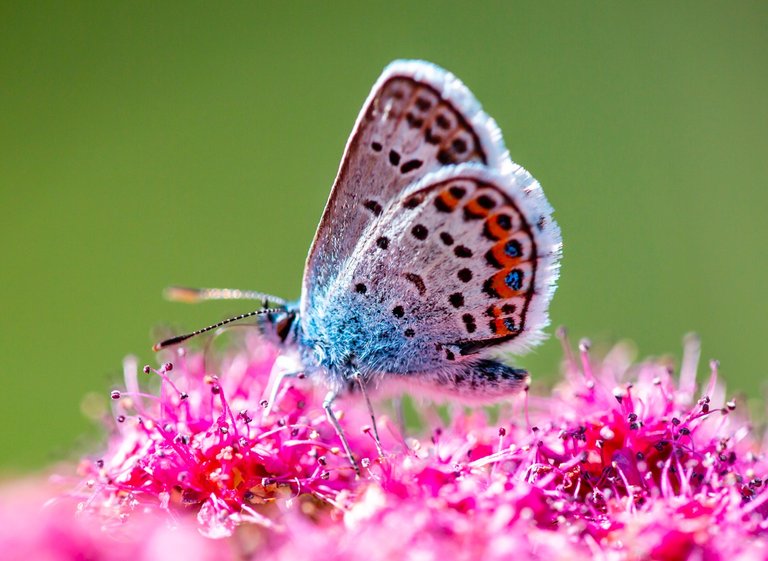
It is best to hunt for insects near flowering plants that are rich in nectar. A little 'camping' and waiting provides you new models to show up. Butterflies and bugs most likely will be distracted by the nectar and do their own business instead of restlessly turn their heads from side to side, shying away 10 meters from a sudden shadow or movement :)
Also note, that when pumping nectar out of a flower, butterflies usually do not stay motionless, but move a little, "dancing" like a real model, changing their position on a flower - which provides you a series of slightly different macro photos; you will be getting different viewing angles, not 20 identical photos.

As you can see in this photo, ordinary domestic flies also like to taste sweet nectar sometimes. A delicacy!
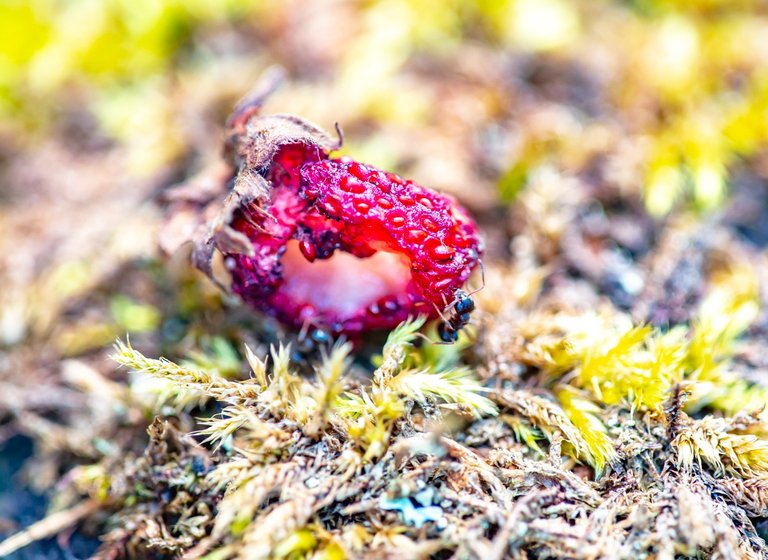
A huge sweet juicy strawberry - after a snail has bitten it, there is still plenty of food left for the ants. And ants have a big sweet tooth too.
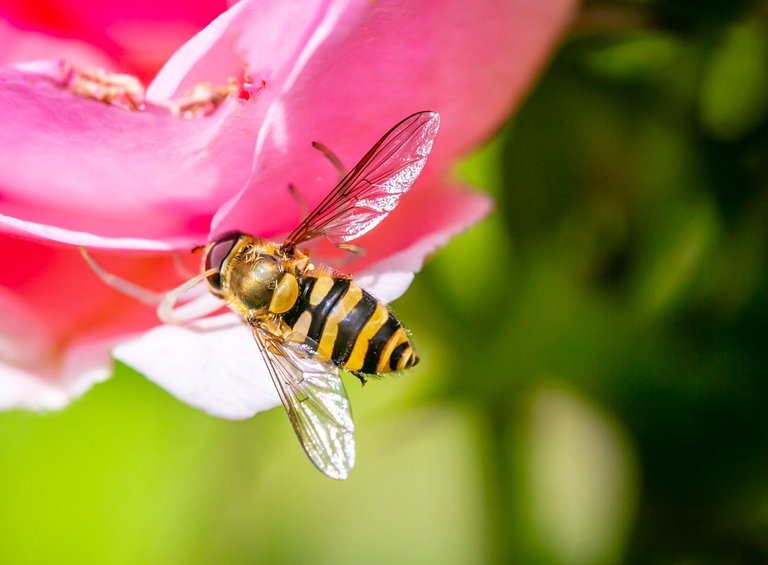
Here... I wanted to shoot the rose, and then noticed the fly... do you see something strange about this pic? Well, the next frame says it all.
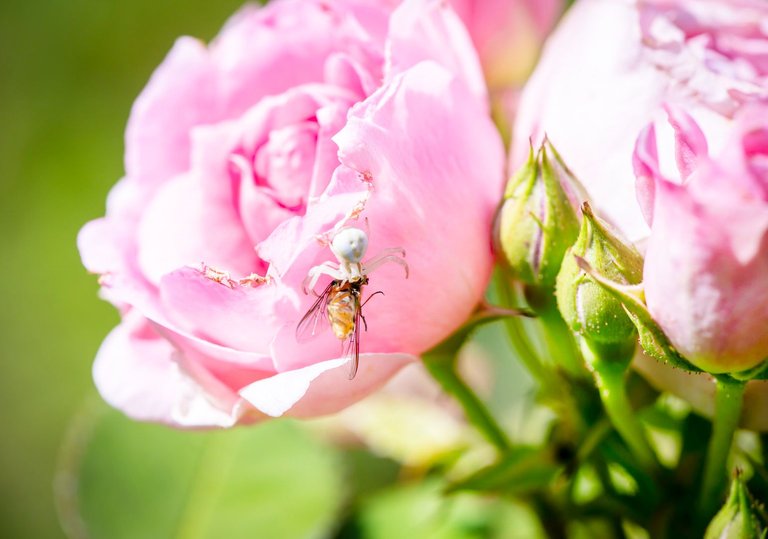
The picture is not as peaceful as you might think at the first sight. Yes, it is not a flower and a fly, but a fly and a spider, a spider and a prey... that is how everything works in nature: nature is about "food chains", about small minnows and big whales :)
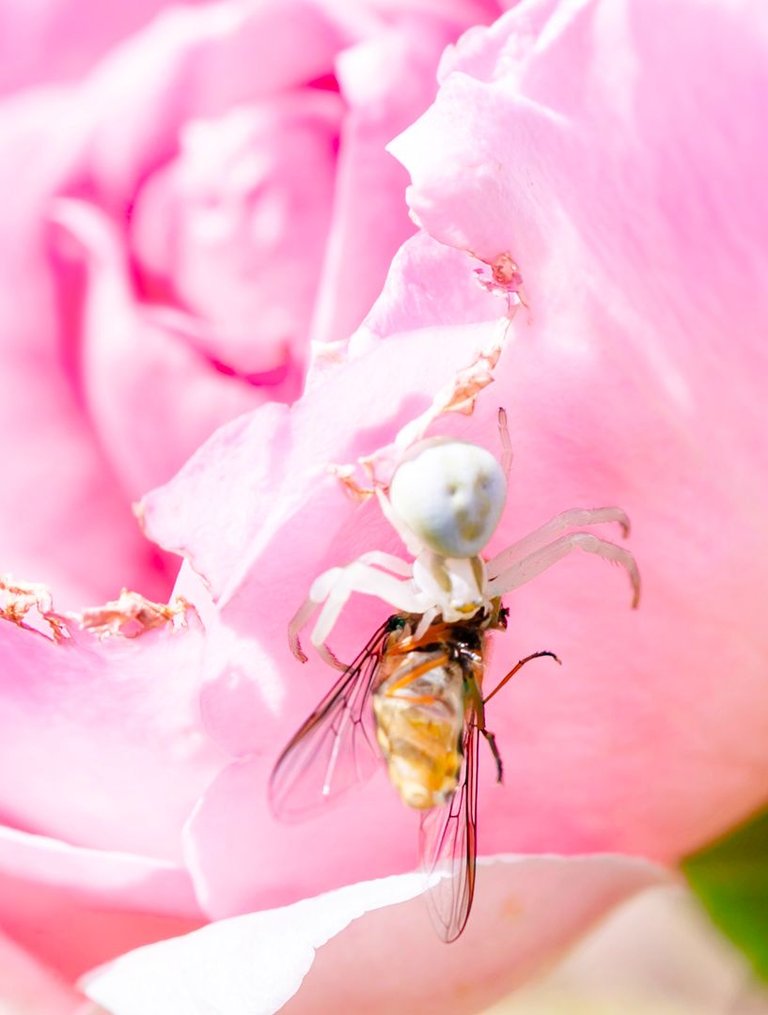

The grasshopper lurked in ambush on a plantain stem. (Did you know that grasshoppers are predators? They eat not greenery, but other smaller insects).
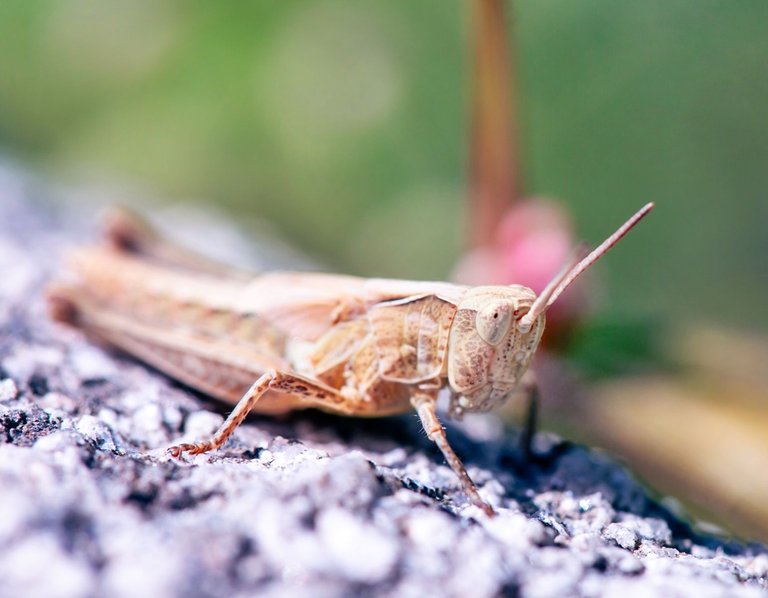
I followed it and took a few more photos in different locations (on other plants and rocks).
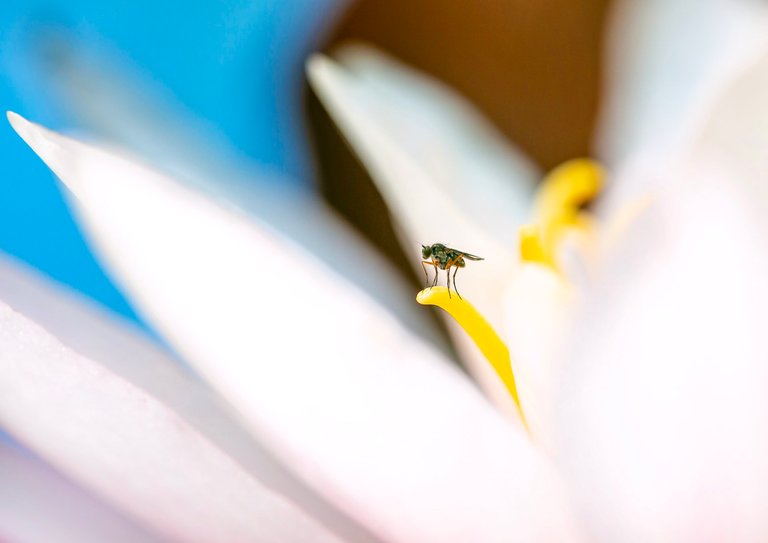
And this might be the smallest insect I have photographed yet: a newborn mosquito sitting and drying its wings on a water lily flower.
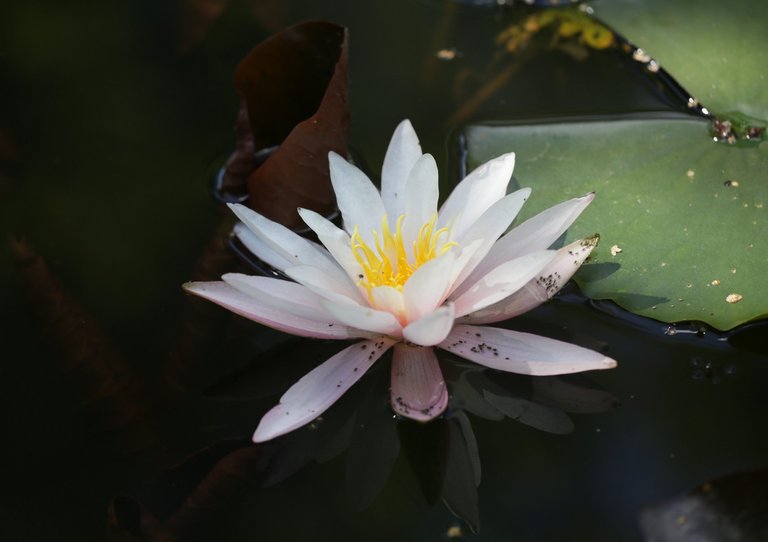
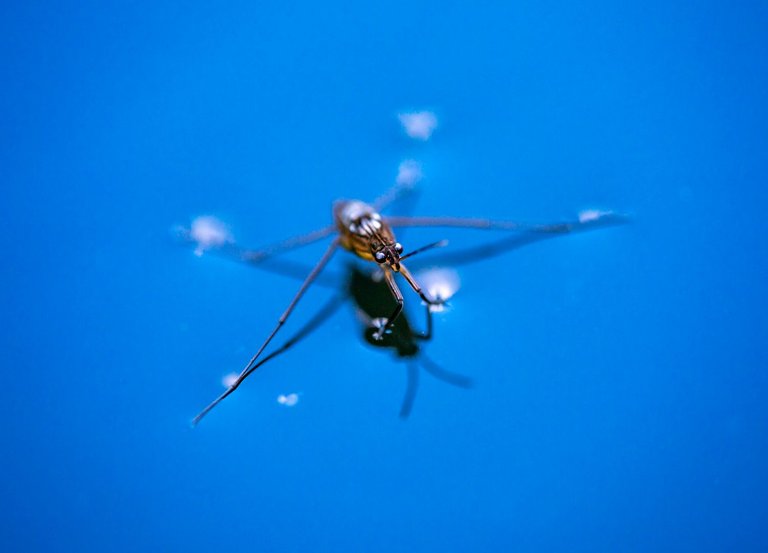
The water world hides many interesting things for a dedicated macro-photographer, but to notice them one need a lot of time, patience - and a little luck. (In the photo above you see a common water strider - Gerris lacustris. In total, there exist about 1700 species of water striders). Several times I met water striders infected with tiny parasits! But to photograph them, you need a really high magnification, which I do not have...
Let me round up today's blog with this. ☘️
Thanks for walking with me - and see you next time!
| location: | St.Petersburg, Russia | July 2024 | natural light |
| camera/lens: | Canon 5D | Sigma 150mm | raw-conv |







